Lockheed Hudson, Co. Sligo, January 1941
The afternoon of January 24th, 1941 would find a Lockheed
Hudson aircraft from RAF 233 Squadron, Aldergrove, Co. Antrim
made a forced landing around 5.00pm having run low on fuel in
the townland of Derk Beg, Skreen. It landed, wheels up, in
a field belonging to Patrick Kilcullin and he, along with Peter
Barrett a neighbor, were the first on the scene. They were
joined shortly after by Patrick McTernan, a Local Defense Force
man. They, along with a number of others, including the
Volunteers at Aughris Look Out Post (LOP) no 67 and Rosskeragh
LOP 68 had all seen the aircraft circling over Sligo Bay from
about 15:50 onwards. It dropped its four bombs out at sea, 2
miles south of Raghly Harbour, before making its landing.
Visibility was poor and it was hard for observers to keep track
of it. The crew asked Peter Barrett where were they, as
they thought they had crashed in Scotland. After discovering
they were in Ireland, three of them, leaving one crewman at the
aircraft, went towards the village of Skreen but were
apprehended by Gardai, the Irish police, from the station
there. A local story says that the crew were brought to
Scott’s pub nearby and while there, there was a row between two
drunken customers and one of the crew reportedly said he hoped
he can rejoin the war as it was safer than the pub!
Shortly after the crew returned to their aircraft along with
Garda Sergeant Peter Byrne from Skreen, two members of Irish
Army Military Intelligence, G2, arrived from Athlone, searched
the aircraft and confiscated the logbooks and the two carrier
pigeons that each aircraft had. A local un-named Volunteer from
Aughris LOP accidentally let off the emergency dingy and blocked
the door escape, briefly trapping the G2 men inside.
Captain Joseph Kevin Birthistle of the Irish Army was the assistant intelligence officer in Western Command and he was one of the officers dispatched from Athlone on the 24th of January to the site of the landing. He filed a report thereafter dated 31 January reporting what he found. On landing it had managed to stop after 20 metres but two of its propellers on each engine had been bent and the belly was damaged. But it was otherwise undamaged.
The Army report records that the four crew members were taken to either the Grand Hotel or Royal Hotel in Sligo town where they were provided opportunity to rest before being taken on to Athlone barracks and thence to the Curragh where they were interned. The joined the six incumbents of the British Compound and were joined around the same time as two survivors of the tragic loss of Whitley T4168 off Donegal, Sgt George Victor JEFFERSON 816145 from Belfast and Leslie John WARD.
Birthistle departed Sligo on the following day, the 25th and
proceeded to Donegal to carry out a similar task related to the
crash of that Whitley bomber there.
Irish
newspapers carried the following brief government message on
the days papers.
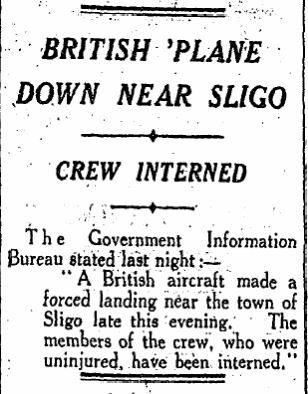
From the operations
record book (ORB) of 233 Squadron, P/O Welply and his crew
took off at 9:20 in the morning to find and escort a
Gibralter bound convoy. Bad weather prevented this
crew or indeed any other crews from 233 Squadron in finding
the convoy.
An Irish Air Corps
salvage team dug trenches into which the undercarriage was
lowered and they managed to repair the aircraft enough on
site to allow it to be recovered. It was bought from
the British Government during early 1941 and finally on the
26 March 1941, the pilot Ivan Hammond of Aer Lingus arrived
and flew the plane from Kilcullin’s field to the Irish Air
Corps headquarters at Baldonnel Aerodrome, Co. Dublin.
He had previously flown the two Lockheed 14 airliners
briefly used by the airline until 1940. It would be
May 1942 before Hudson P5123 flew again as Irish Air Corps
No. 91 and was used as a coastal patrol aircraft flying out
of Baldonnel and Rinneanna air fields. It was sold to
Aer Lingus after the war who planned to use it as a crew
trainer but civilian registration was refused and later
still was sold to Belgium around 1947, serving with John
Mahieu Aviation, following which it was scraped in 1954.
This photo of the
aircraft in its Irish Air Corps colors as No. 91 was
provided by the son of James Copley, an Air Corps technician
who helped in the recovery of such aircraft during the war.

It can be seen here in the background of another James Copley
photo, with RAF Tomahawk
AH920 in the foreground, and given the position of the
flaps and proximity of the tarmac, both photos may have been
taken the same day. The history of the Tomahawk's short
stay in Dublin places this photo probably some time around the
13th of May 1942 when AH920 was ready and flown back to Northern
Ireland. A Lysander aircraft of the Irish Air Corps is
visible between the two aircraft.
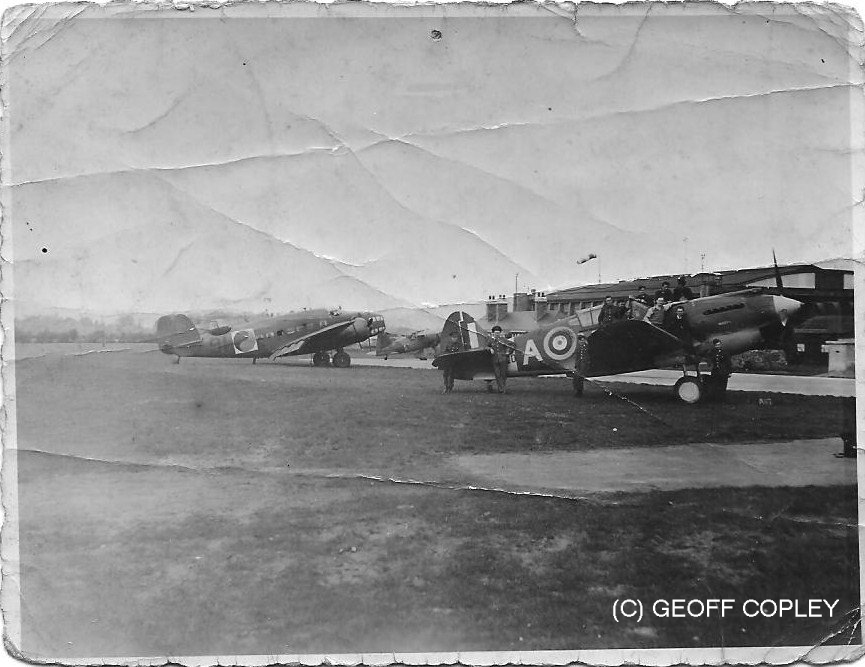
The Royal Air Force crew of Hudson P5123 are described in the
following paragraphs. Two would not survive the war, and
one would not survive the peace for long.
The men's next of kin were all sent telegrams on the 26th of
January 1941 informing them that the four had been posted
missing, and that any further information would be passed to
them in due course. Happily, at that time, the very next
day each were sent a telegram stating: "Further
information received states that your ... ... previously
reported missing is now reported safe and well and interned
in EIRE."
The AIR81 casualty report in the UK National Archives
contains these telegrams and indicate that the Irish authorities
had informed the British authorities of the men's names late on
the 24th January, and this was reported onward to the RAF
Northern Ireland late that same night.
Each family was written to on the 3rd of February to confirm
the telegram contents, and again on the 7th February to inform
them of the postal address of the men. Cowper's letter,
for example, reads as follows:
I am directed to refer to a letter from
this department dated the 3rd February, 1941, and to inform
you that the address of your brother, Pilot Officer R.T.R.
Cowper, "The Internment Camp, Curragh, Co. Kildare,
Eire". Envelopes should be marked "British
Prisoners-of-war".
It would appear that he is
being excellently treated by the local residents who have
provided games and amusements for him and his fellow
internees"
His sister wrote back on the 12th of February to thank the Air
Ministry for their assistance and to report that her brother had
written them to say he was being well cared for, "but naturally chafes at being where he is
instead of being able to help the R.A.F."
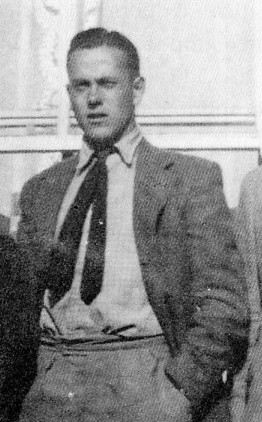
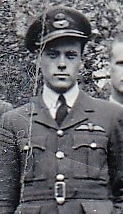 P/O Denys WELPLY
42472, the pilot and Captain of the aircraft was born on the 16
Aug 1917 to Dr. Alfred Welply, M.D., and Sarah Poyntz
Welply. His father was the Secretary of the United Kingdom
Medical Practitioners’ Union throughout the war and visited
Northern Ireland on occasion in that capacity.
P/O Denys WELPLY
42472, the pilot and Captain of the aircraft was born on the 16
Aug 1917 to Dr. Alfred Welply, M.D., and Sarah Poyntz
Welply. His father was the Secretary of the United Kingdom
Medical Practitioners’ Union throughout the war and visited
Northern Ireland on occasion in that capacity.
He was detached to Aldergrove from Leuchars in early August
1940 as part of the Squadrons move to the Northern Ireland
airfield. His first mention on a mission then appears to
be the 21st of August where he appears listed as co-pilot or
second crew member with a P/O Baudoux on a convoy escort mission
that failed to meet its convoy. The two flew together a
number of times that month until having to force land
Hudson T9318 near RAF Oban causing great damage to the airframe
but luckily with no human damage. His missions in
September are with a variety of pilots. On the 14th of
October 1940 he flew his first operational mission as Captain on
a patrol which could not be completed due to weather.
His escape and evasion file, which was recorded after his
release from Internment in October 1943, states that he had
trained at No 1 Operational Training Unit (OTU) sometime after
his commencing RAF service in January 1939. In this acount
he states simply that: I was
captain of a Hudson aircraft which left ALDERGROVE on 24 Jan
41 on convoy work, and subsequently force landed near Sligo
Bay. The other members of the crew were... The
whole crew was arrested on landing and interned in THE
CURRAGH Camp." He lists the names of the three
other crew members, also adding that Cowper had escaped and was
later captured by the Germans.
He was required to state his involvement in escape attempts for
the escape and evasion report, and lists four such endeavors:
(a) On 25 Jun 1941 I was one of a party
of nine who got out of the camp. Six escapees,
including COWPER, but I was recaptured.
(b) In the middle of Feb 42 I was concerned in an
attempted mass escape by the use of two bridges over the
barbed wire. I was unable to get out of the camp.
(c) On 17 Aug 42 I was concerned in another attempt at
mass escape through the main gate. I was one of ten
who got out, but was caught just afterwards.
(d) In addition, I took part in numerous abortive
tunnel schemes.
The USAF Academy in Colorado holds the archives fellow internee
Roland L Wolfe left behind after his death. There are many
photos and documents, including this photo from that source,
showing the following internees, left to right:
P/O John William SHAW 78664
P/O Roland 'Bud' L WOLFE 102518
P/O Denys WELPLY 42472
F/Lt James Grant FLEMING DFC 40380
S/Lt Bruce Nathanial GIRDLESTONE RNZN

Following his release from internment, the now Flight
Lieutenant Welply was posted into 279 Squadron during March
1944. 279 Squadron were at that time flying Hudson
aircraft in a search and rescue role, flying out to find downed
aircrew at sea, and when possible dropping rafts to them or
guiding rescue craft to them. At this same time, another
former internee, Douglas V
Newport was also serving with the unit so they may have
remained in contact if not stationed apart on detachments.
Denys first mission seems to have been on 15 April 1944.
He continued to fly for the following months, transitioning to
the Vickers Warwick type during that time.
On the evening of 21st November 1944, Denys took off in Warwick
HG210 with his crew of two British, two Kiwi and one Canadian on
board for a night time navigation training flight. They
sadly never returned from their mission, the aircraft loss was
recorded on a RAF Form 765 as:
“Q” aircraft was airborne on night
navigation exercise over North Sea at 17.39 hrs. At
18.16 it was given a 1st Class D/F Fix — “5403N
0103E”. At 18.30 "Q” sent a signal in (unreadable
text) - “Returning Base. Engine trouble 5415N 0100E 19.15 —
18.30”. At 18.36 aircraft was given a 1st Class D/F Fix —
5408N 0101E”. Nothing further was heard or seen of the
aircraft. No.12 Group reported a “fading plot” which
disappeared at 18.57 in Position 147 FLAMBOROUGH HEAD 22
miles. It was not showing distress I.F.F.
A Hudson was airborne at
19.48 and searched without result. The following morning
track home and area of ditching were again covered by five
aircraft without result. The next day a large search was
carried out without result by 18 aircraft.
His name is recorded on the Runnymede memorial in Surrey.
P/O Roderick Thomas Redpath COWPER 41988 was the
navigator of the aircraft.
He was born in Richmond, Surrey in May 1917 to Thomas and
Georgina Cowper. He does appear on the 1939 register
despite being a serving RAF officer for the simple reason that
he was on sick leave having had a motor bike accident in
Scotland on the 27th of July.
His name seems to be first mentioned in the 233 Squadron on 29th
Nov 1940 when he flew with P/O Jamieson on a patrol to the
occupied Norwegian coast. He flew a number of missions in
December and January 1941, including just one other on January
23rd that finds Welply and Cowper on the same aircraft.
Roderick managed to escape with five other internees on the
25/26th June 1941. He was recommended for a Mention in
Dispatches for his efforts at escaping, the
recommendation, filed in WO373/61 reads:
Pilot Officer Cowper and another
officer, although not one of the original Curragh escaping
party, took advantage of the conditions on the night of June
25th/26th and escaped themselves. They showed great
resource and presence of mind in taking immediate advantage
of an unexpected opportunity.
The award was however not approved.
He was posted back into 233 Squadron on the 24 July 1941 per
his AIR81 file contents. His first mission back at the
Squadron was on 6th August and he flew with the Squadron until
the 13 of September 1941 when he again went missing on a Hudson
patrol. This time, however, there would be no 'games or
amusements' as he and his three crew mates came down off the
coast of St Malo, France and were taken prisoner. Twelve
aircraft of the unit took off at staggered times from St Eval in
Cornwall on that morning to carry out anti submarine
patrols. Their capture location was recorded on post war
POW questionnaire forms.
Upon his release from captivity at the end of the war, Roderick
took advantage of a scheme to allow British Armed forces service
members in Australia to remain there following discharge.
In October 1945 he signed up for the scheme from RAAF Parafield
where the Royal Air Force's 238 Squadron was operating from at
the time. He had been posted into the squadron on the 23
October 1945 from HQ 300 Group, though strangely listed as a G/D
Pilot, a General Duties pilot. The Squadron
disbanded in February of 1946 and his name was not found being
posted out in the Operations Record Book.
His name appears in a small social column notice on the 21 June
1946 in the Queensland Times, retrieved from the Trove newspaper
database. It reported: Tall
R.A.F.er, F/Lieut. Roderick Cowper, guest of Kerwin family,
Thorn-street, was Basil Kerwin's room-mate for 2˝ years as
P.O.W. in Germany. Lola is delighted to have first hand
information about absent brother who is said to have
developed a very English accent.
Roderick remained in Australia as per his 1945
application. He is found in the 1949 electoral register
for Ashford-Barwon-Gwydir districts New South Wales. The
address is given as Pineleigh, Nullamanna and his occupation is
that of farmer. It's not clear if he was residing with anyone at
that time. Probate records however show that he passed
away on the 6th April 1949. Newspaper articles from the
local town reported that sadly, Roderick took his own life
having been displaying symptoms of depression in the proceeding
months. He was survived by his parents and two sisters,
Enid Davey and Elizabeth Buley. His family were sadly
unable to find a photo of Roderick
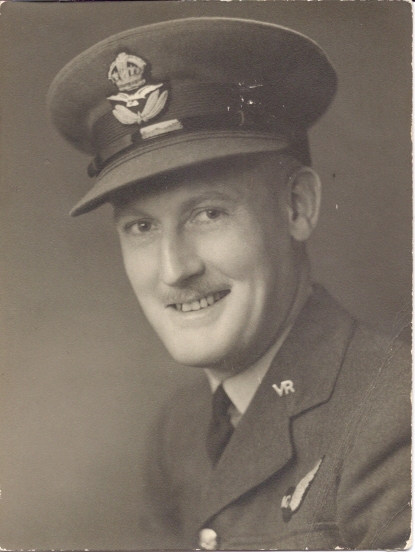 P/O John
William SHAW 78664 was born in March 1910 to Ethel A and
Frederick C Shaw. His prewar profession was that of an
accountant and his RAF service began in February 1940. He
would be posted to 9 Bombing and Gunnery School in early April
1940 where he trained as an air gunner, and just under two
months later he would be posted to 233 Squadron on the 4th
Jun. He was dispatched immediately to the Central Gunnery
School for a weeks instruction. As an air Gunner his
missions cannot be traced in the 233 Squadron ORB in this period
due to the bait of only recording the pilot and navigator on
operational missions. The summary of operations for August
1940 does seem to record his arrival at Aldergrove on 19th of
the month.
P/O John
William SHAW 78664 was born in March 1910 to Ethel A and
Frederick C Shaw. His prewar profession was that of an
accountant and his RAF service began in February 1940. He
would be posted to 9 Bombing and Gunnery School in early April
1940 where he trained as an air gunner, and just under two
months later he would be posted to 233 Squadron on the 4th
Jun. He was dispatched immediately to the Central Gunnery
School for a weeks instruction. As an air Gunner his
missions cannot be traced in the 233 Squadron ORB in this period
due to the bait of only recording the pilot and navigator on
operational missions. The summary of operations for August
1940 does seem to record his arrival at Aldergrove on 19th of
the month.
His escape and evasion report simply mirrors that of Denys
Welply's and records that he took part in the three escape
attempts his pilot partook in. His Irish Army internment
file is surprisingly short on detail. Following his release from
internment he was posted to RAF Station Uxbridge, or at least
under their authority. No 4 Aircrew Reception Center was
the posting one month later, followed by a posting to the
Central Gunnery School for a Gunnery Leaders Course. This
was followed up a posting on 25 April 1944 to 53 Squadron.
He was posted to the crew of F/L J W Carmichael and flew his
first operational mission on May 7th 1944. He flew again
on the 19th and 29th of May with this crew. On their first
patrol of June 1944, on the 6th, D-Day, John's crew in Liberator
BZ944 made two attacks on U-boats in the channel. The
aircraft received significant damage from flak fired by one of
the the German U-boats. They believed at they time that
they had sunk a U-boat but they are credited with the damage to
U-963.
His penultimate mission on the 10th of June seen his crew divert
to Dunkeswell air field.
On June the 13th he took off on a patrol at 2130 with F/L
Carmichael and crew in Liberator BZ818 on an anti U-boat
patrol. The 53 Squadron ORB reported: At 2355, when S.W. of Ushant, on the lower
end of the patrol, the aircraft sent a flash report
indicating that it was about to attack a U/Boat.
No further signals were received and the aircraft
failed to return.
His name is recorded on the Runnymede memorial in Surrey.
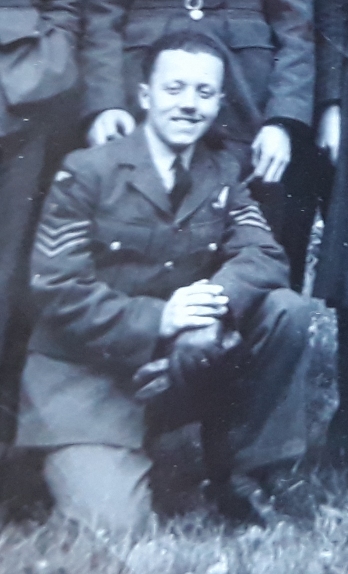 Sgt Norman
Vyner TODD 551678 started his RAF service in May 1937 and
was the Wireless Operator on P5123.
Sgt Norman
Vyner TODD 551678 started his RAF service in May 1937 and
was the Wireless Operator on P5123.
He was born on the 3rd April 1920 to Elsie and William Todd in
Scotland.
He kept a wartime diary and for the day of the crash he wrote:
Crash landed on hill in Sligo at 1650.
Taken into custody by police who stand us a drink in the
local pub. Nurse at crash - Cpl. in Red Cross, home on leave
from London. I slip her my address and she sends telegram
home for me.'
Norman was an avid table tennis player, his name makign the
Leinster Leader newspaper in 1941 for his skills in
He was released to the RAF in October 1943 and remained on
active duty with the RAF. he was commishioned as an
officer in 1944 with serial number 54450 and in 1952,
transferred to the Aircraft Control Branch. His family
recalled that he trained in radar and advanced wireless
telgraphy after the war. He left the service in 1961 as a
Flight Lieutenant in the Catering Branch to which he had
transferred in 1955. He continued working in catering and
hospitality after leaving the air force.
Norman passed away in 1995 in Nottingham.
The daughters of another British internee, Robert Harkell, were
able to provide the following group photo of some of the British
internees. The three men standing at the rear of the photo
in civilian attire were local civilians. Those faces that
can be identified are believed to be:
In the front row of the photo, from left to right
Sgt Robert George HARKELL 749495
Sgt Norman Vyner TODD 551678
Sgt William BARNETT 973926
Sgt David SUTHERLAND 51946
It seems most likely that the tall man standing at the very left
of the photo is Sgt Herbert Wain RICKETTS 581473.
The airman with the light coloured hair standing at the middle
is Sgt George Victor JEFFERSON 816145
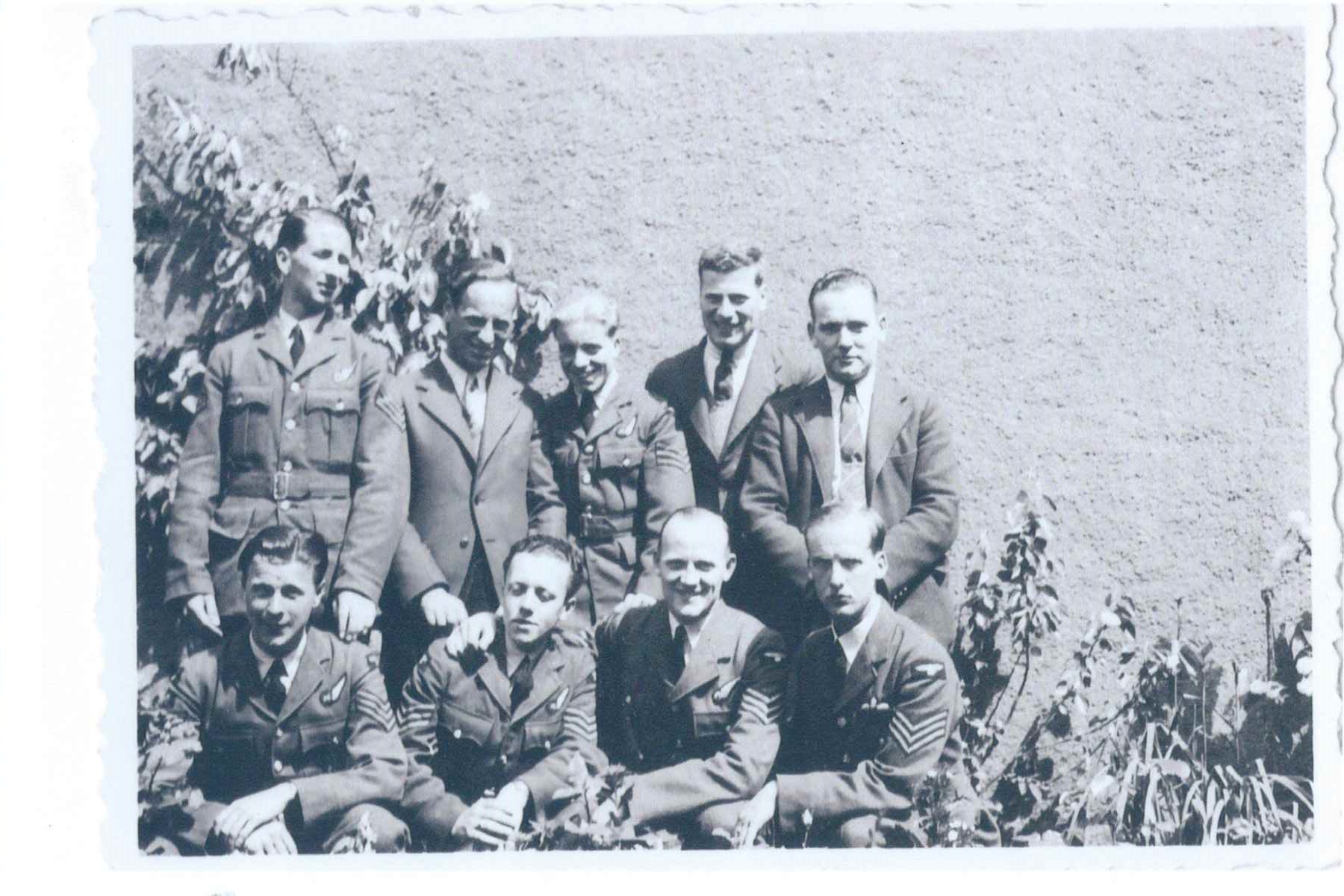
Another photo from the family of internee S J Hobbs included
both Denys Welply and Norman Todd.
It is not known when the image below was taken exactly, but it
includes both Sgt Hobbs and F/Lt Proctor so is likely to have
been around the time of Sydney Hobbs wedding, though the lady in
the photo does not appear to be his wife Joan. This small
and battered photo shows the following Royal Air Force
internees:
Standing, Left to Right: Herbert Wain RICKETTS, Denys
Welply, David SUTHERLAND, Douglas Victor NEWPORT, Leslie John
WARD, Robert George HARKELL, William Allan PROCTOR, George
Victor JEFFERSON and Aubrey Richard COVINGTON.
Kneeling, Left to Right: Norman Vyner TODD, Sydney John
HOBBS.
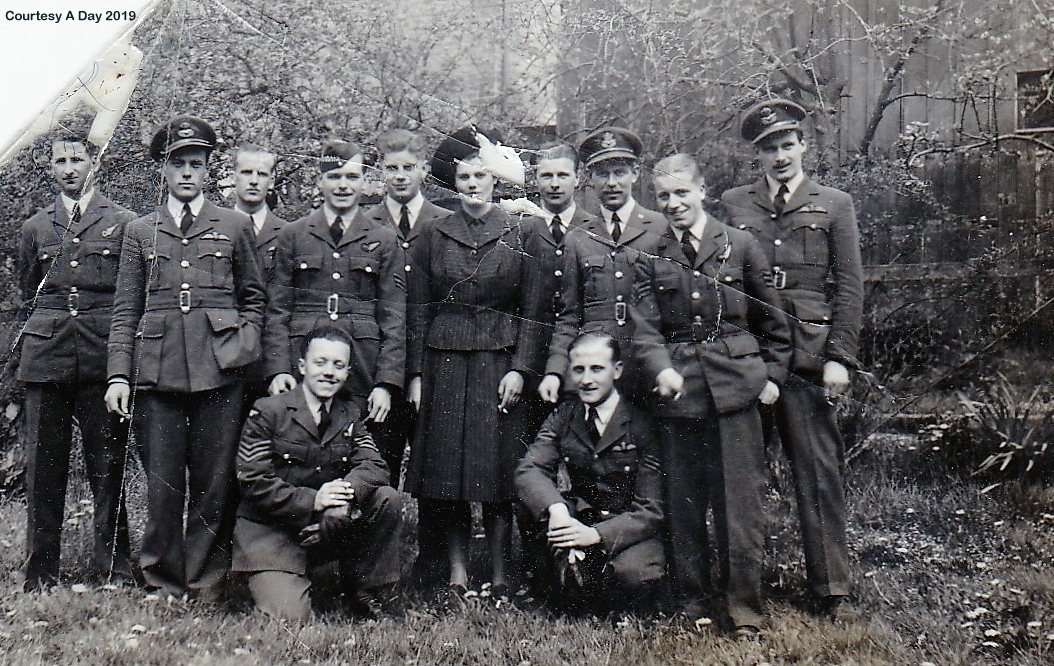
Compiled by Dennis Burke, 2019. With the very kind help of the
Tood family, the relatives of J W Shaw.
